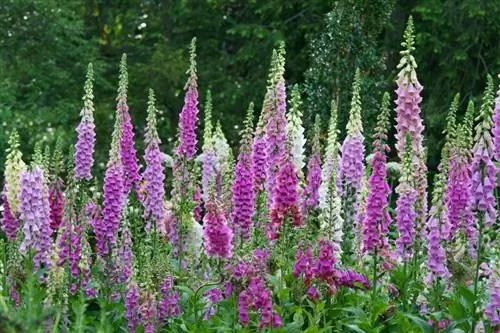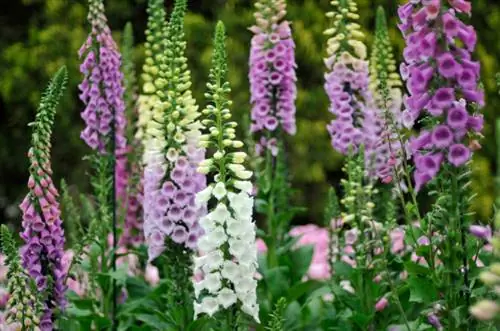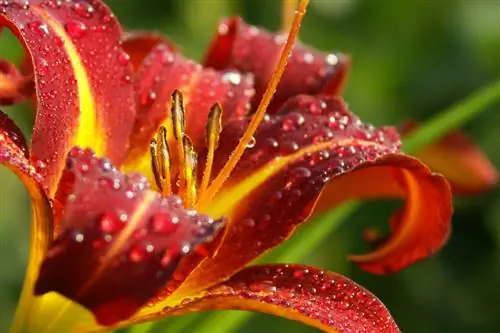- Author admin [email protected].
- Public 2023-12-16 16:46.
- Last modified 2025-01-23 11:20.
It is synonymous with toxicity and yet it is often planted because of its colorful flowers. So that you can enjoy the foxglove for a long time, it should be planted in a location that mimics its natural habitat.

Which location is optimal for foxglove?
The ideal location for foxgloves offers partial shade, moderate to high sunshine, and light wind and heat protection. The substrate should be deep, loose, permeable, moist, rich in nutrients and humus and slightly acidic. Be safe as foxglove is poisonous.
Location requirements
Foxglove prefers to grow in partial shade. But he is not demanding. He is also satisfied with a location in full sun. It is important for him that he is not exposed to prolonged heat, which could quickly dry out his soil. He can also be offered a place in the shade.
In addition to moderate to long hours of sunshine, a sheltered location is important for this plant. A drafty location could quickly lead to the tall inflorescences breaking. But don't overdo it: the location shouldn't be completely windless.
Caution: Since foxglove is extremely poisonous, it should not be planted in households or gardens with small children or free-roaming animals such as dogs and cats. There is a great risk that children and animals will be poisoned by it.
Substrate requirements
In order to keep the care of the foxglove low, a suitable substrate should be chosen right from the start. In addition to a permanent moderate moisture content, many nutrients are important to keep the foxglove blooming and resistant to diseases. A soil with the following properties is ideal:
- profound
- easy
- permeable
- moist
- rich in nutrients and humus
- slightly sour
Tips & Tricks
Foxglove looks great in front of dark trees such as arborvitae and yew as well as dark-leaved ornamental shrubs. Next to ferns and grasses or embedded in a bed of silver candles or astilbe, it creates colorful contrasts.






